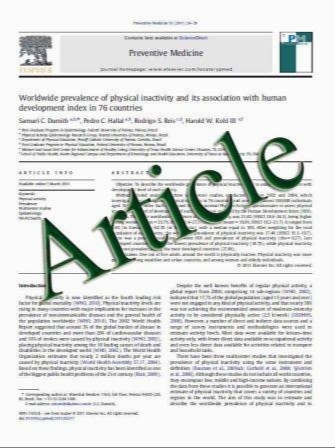Traditional breast cancer risk factors in relation to molecular subtypes of breast cancer
- نوع فایل : کتاب
- زبان : انگلیسی
- مؤلف : Rulla M. Tamimi Graham A. Colditz Aditi Hazra Heather J. Baer Susan E. Hankinson Bernard Rosner Jonathan Marotti James L. Connolly Stu
- چاپ و سال / کشور: 2011
Description
At least four major categories of invasive breast cancer have been reproducibly identified by gene expression profiling: luminal A, luminal B, HER2-type, and basal-like. These subtypes have been shown to differ in their outcome and response to treatment. Whether this heterogeneity reflects the evolution of these subtypes through distinct etiologic pathways has not been clearly defined. We evaluated the association between traditional breast cancer risk factors and risk of previously defined molecular subtypes of breast cancer in the Nurses’ Health Study. This analysis included 2,022 invasive breast cancer cases for whom we were able to obtain archived breast cancer tissue specimens. Tissue microarrays (TMAs) were constructed, and slides were immunostained for estrogen receptor (ER), progesterone receptor (PR), human epidermal growth factor receptor 2 (HER2), cytokeratin 5/6 (CK5/6), and epidermal growth factor receptor (EGFR). Using immunostain results in combination with histologic grade, cases were grouped into molecularly defined subtypes. We used Cox proportional hazards models to estimate hazard ratios (HRs) and 95% confidence intervals (CIs). We observed differences in the association between risk factors and subtypes of breast cancer. In general, many reproductive factors were most strongly associated with the luminal A subtype, although these differences were not statistically significant. Weight gain since age 18 showed significant differences in its association with molecular subtypes (P-heterogeneity = 0.05) and was most strongly associated with the luminal B subtype (P-trend 0.001). Although there was not significant heterogeneity for lactation across subtypes, an inverse association was strongest for basal-like tumors (HR = 0.6, 95% CI 0.4–0.8; P-heterogeneity = 0.88). These results support the hypothesis that different subtypes of breast cancer have different etiologies and should not be considered as a single group. Identifying risk factors for less common subtypes such as luminal B, HER2-type and basal-like tumors has important implications for prevention of these more aggressive subtypes.
Breast Cancer Res Treat DOI 10.1007/s10549-011-1702-0 Received: 25 July 2011 / Accepted: 26 July 2011


